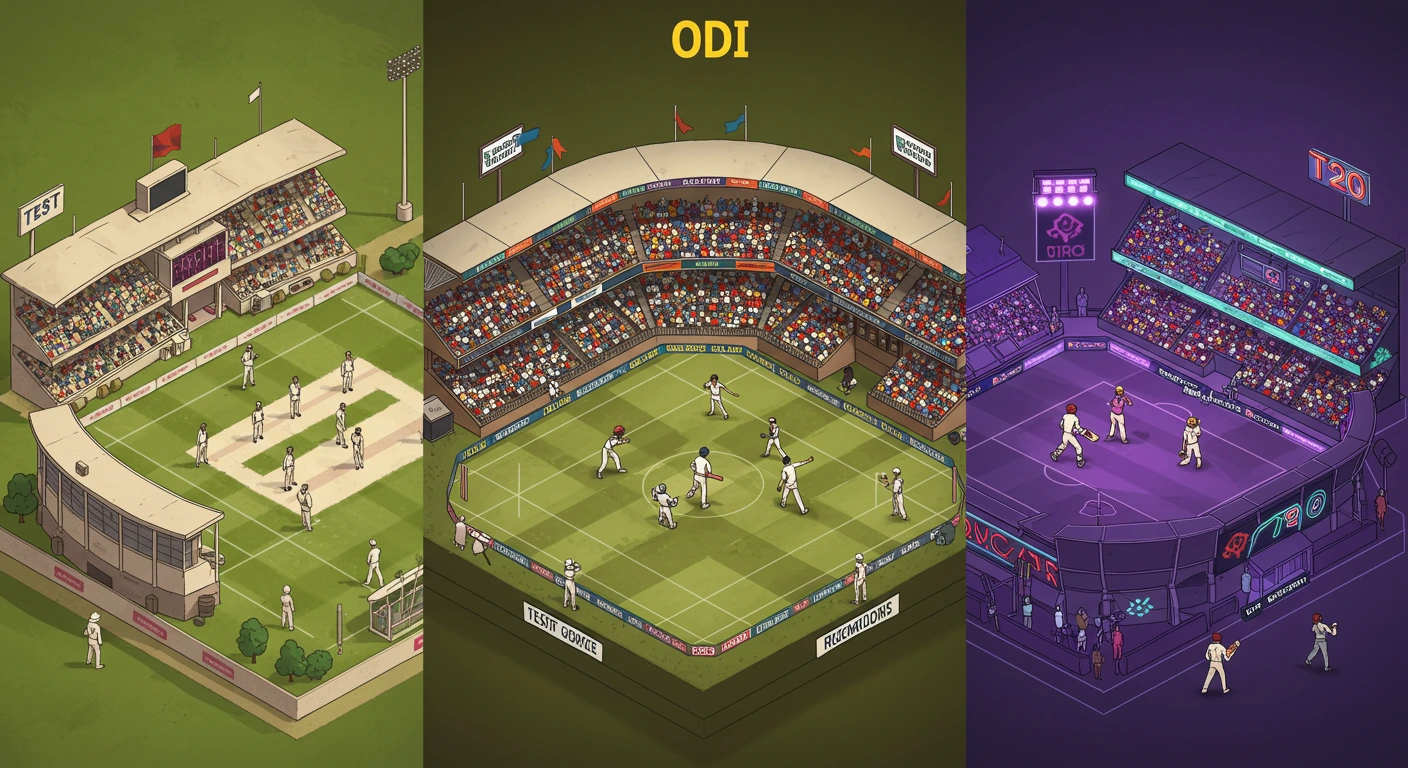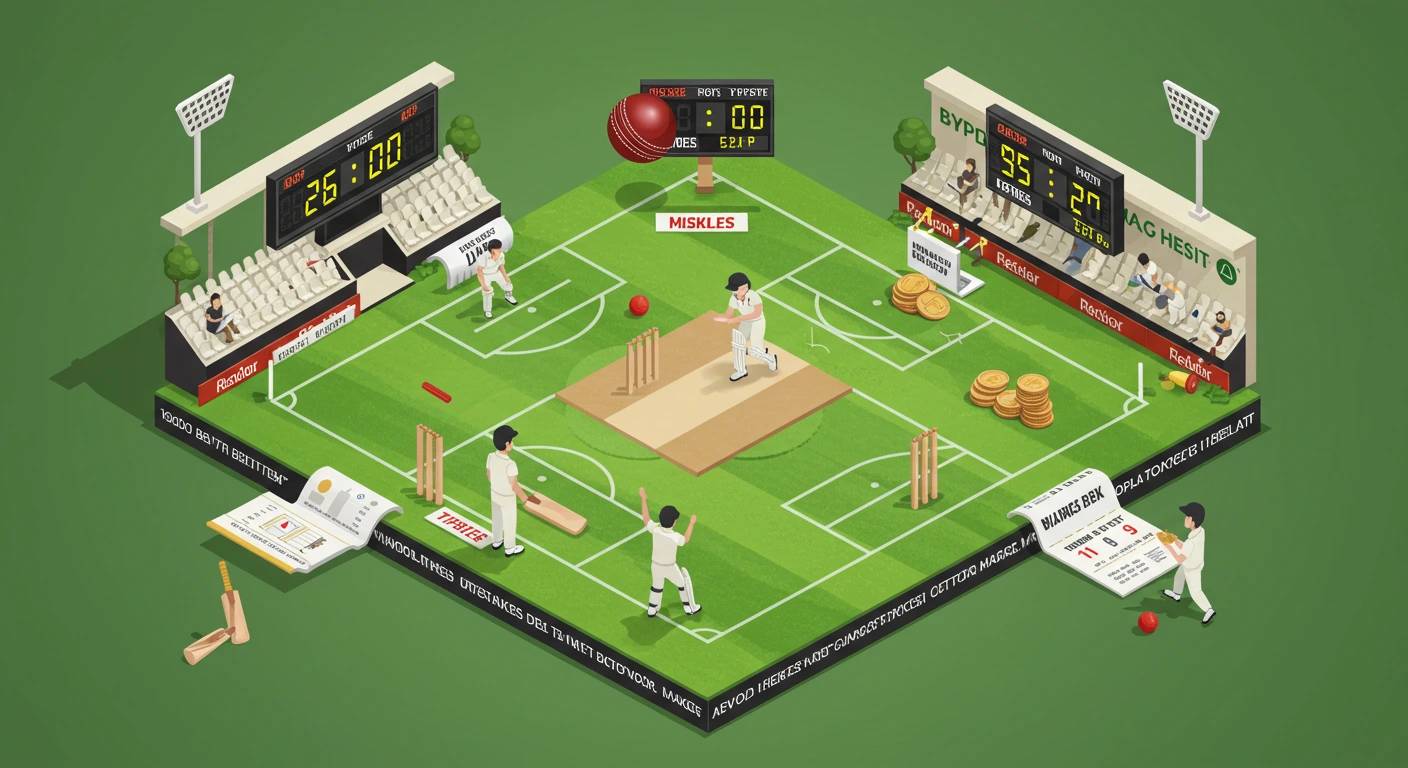Cricket isn’t just a sport—it’s a passion that unfolds in wildly different ways depending on the format. I’ll never forget my first brush with cricket betting. It was during a Test match, and I’d confidently wagered on my team’s star batsman to dominate. Day one went well, but by day three, the pitch had turned, the weather had shifted, and my bet was sinking faster than a tail-ender facing a swinging ball. That humbling experience taught me something vital: betting on cricket isn’t a one-size-fits-all game. Each format—Test, ODI, and T20—has its own pulse, and understanding cricket formats is the key to cracking their betting codes.
If you’ve ever nailed a T20 bet only to flounder in an ODI, or wondered why Test matches feel like a gamble within a gamble, you’re in the right place. In this deep dive, we’ll unpack how Test, ODI, and T20 cricket differ and why those differences demand distinct betting strategies. Expect fresh insights, a touch of personal perspective, and actionable tips to elevate your game. Let’s step onto the pitch.
The Three Faces of Cricket: Test, ODI, and T20
To master cricket betting, you first need to know what sets each format apart. Their rules, pace, and dynamics shape not just the play but also the odds. Here’s a breakdown:
Test Cricket: The Long Game
- Duration: Up to 5 days, two innings per team.
- Style: A slow, strategic duel where patience and technique reign. Think chess with a bat and ball.
- Influencers: Pitch wear, weather shifts, and player endurance.
Test cricket is the marathon of the sport. A single match can stretch over 90 hours, with twists that unfold over days. The International Cricket Council (ICC) calls it the ultimate test of skill and stamina—and for bettors, it’s a test of foresight too.
ODI Cricket: The Middle Ground
- Duration: One day, 50 overs per side.
- Style: A blend of strategy and flair, balancing caution with calculated aggression.
- Influencers: Powerplays, middle-over tactics, and toss conditions like dew.
ODIs strike a harmony between Test depth and T20 intensity. They’ve been a fan favorite since the first Cricket World Cup in 1975, offering enough time for strategy but demanding a brisk pace.
T20 Cricket: The Fireworks
- Duration: About 3 hours, 20 overs per side.
- Style: Fast, furious, and unpredictable—built for big hits and bold moves.
- Influencers: Recent form, matchups, and split-second decisions.
Born in 2003, T20 flipped cricket on its head. The T20 World Cup showcases its chaos: every ball counts, and momentum swings like a pendulum.
How Cricket Formats Shape Betting Strategies
Each format’s DNA dictates how matches play out—and how you should bet. Let’s explore how Test, ODI, and T20 demand unique approaches.
Test Cricket: Betting on the Long Haul
Test matches are a bettor’s endurance test. Their length introduces variables shorter formats dodge—like the chance of a draw, which happens in about 25% of Tests. Here’s what to focus on:
- Draw Potential: Unlike ODIs or T20s, a Test can end without a winner. Rain or a stubborn batting side can foil your bet, so always weigh the likelihood of a stalemate.
- Pitch Evolution: Day one might favor batsmen, but by day five, a crumbling pitch can turn spinners into kings. Check pitch reports before betting.
- Weather Watch: Overcast skies boost swing bowlers, while rain can truncate play. A quick peek at the forecast can save your stake.
Betting Tip: Look beyond match winners. Session bets (e.g., runs in a session) or props like “top bowler” can hedge against the format’s unpredictability.
ODI Cricket: Timing is Everything
ODIs are a Goldilocks format—not too long, not too short, but just right for strategic betting. Their 50-over structure creates distinct phases:
- Innings Phases: Starts are cautious, middles are steady, and finishes are frantic. Live betting shines here—watch for momentum shifts in the powerplay overs.
- Toss Impact: Day-night ODIs often favor the team batting second due to dew, which makes the ball slippery for bowlers. The toss can tilt odds significantly.
- Team Balance: A side with strong all-rounders can adapt better than a top-heavy lineup. Study squads on Cricinfo.
Betting Tip: Bet on specific outcomes like “runs between overs 20-30” to exploit ODI’s predictable ebbs and flows.
T20 Cricket: Ride the Rollercoaster
T20s are cricket’s wild child—short, sharp, and full of surprises. Upsets are common, with underdogs winning nearly 40% of matches. Here’s how to navigate:
- Form Trumps History: A player’s last five games matter more than their career average. A hot streak can defy the odds.
- Matchup Magic: A bowler who owns a batsman (check head-to-head stats) can swing a game in 20 overs.
- Variance Rules: One over can flip a match. Spread your bets—think “total boundaries” or “first wicket method”—to manage the chaos.
Betting Tip: Live betting is your friend in T20s. React to early overs to catch shifts the pre-match odds miss.
Key Insights: Format-Specific Betting Edge
Want to outsmart the bookies? These insights, honed from research and hard-earned lessons, will sharpen your strategy.
Test Cricket
- Context Matters: In a five-match series, a team down 2-0 might fight harder—or collapse. Series standings influence effort.
- Avoid Overconfidence: Favorites falter more in Tests due to the format’s depth. Don’t bet big without digging into conditions.
- Player Stamina: A bowler like James Anderson thrives in Tests because he endures. Back proven long-haul performers.
ODI Cricket
- Ground Dynamics: Small grounds like Chinnaswamy Stadium mean more runs; big ones favor bowlers. Adjust your totals bets accordingly.
- Middle Overs Mastery: Teams that control overs 15-40 often win. Bet on wicket-taking bowlers in this phase.
- Chasing Bias: Teams batting second win 55% of ODIs. Factor this into your pre-match picks.
T20 Cricket
- Underdog Value: Bookies undervalue outsiders in T20s. A calculated punt can pay off big.
- Opening Salvo: The first six overs set the tone. Bet on aggressive openers or early breakthroughs.
- Captain’s Call: Tactical nous—like when to bowl a spinner—can decide T20s. Research captains like Eoin Morgan.
Visual Breakdown: Comparing the Formats
Here’s a quick table to see the differences at a glance:
| Feature | Test | ODI | T20 |
|---|---|---|---|
| Duration | 5 days | 1 day | 3 hours |
| Overs | Unlimited | 50 per side | 20 per side |
| Pace | Slow, strategic | Balanced | Explosive |
| Betting Focus | Pitch, weather | Phases, toss | Form, matchups |
| Risk Level | High (draws) | Moderate | High (upsets) |
This snapshot highlights why a Test bet isn’t a T20 bet. Use it to pick your battles.
FAQs: Your Cricket Betting Questions Answered
Still curious? Here are answers to common queries:
Why do Test bets feel like a lottery?
The five-day span brings more unknowns—pitch wear, weather, and draws. It’s less about luck, though, if you study conditions and trends.
How do I tweak my T20 betting approach?
Zoom in on recent performances and player matchups. Stay flexible with live bets to catch the format’s twists.
Which format suits new bettors best?
ODIs. They’re structured enough to learn patterns but not as daunting as Tests or erratic as T20s.
Does the toss really matter that much?
Yes, especially in ODIs and T20s. Dew or a fresh pitch can sway the game—check conditions before locking in.
Conclusion: Play the Format, Win the Bet
Cricket’s charm is its variety, and betting on it mirrors that richness. Test cricket rewards the patient, ODI cricket the tactical, and T20 cricket the bold. My early Test betting flop taught me to respect each format’s quirks—and now, armed with this guide, you can too.
Understanding cricket formats isn’t just about knowing the rules; it’s about feeling their rhythm and bending it to your advantage. So, next time you’re eyeing a bet, ask: What’s the format telling me? Then play it smart.
Got a betting tale or a question? Drop it in the comments—I’d love to hear your take. And check out our other cricket guides for more winning tips!
why-test-odi-and-t20-betting-are-so-different














Leave a Reply